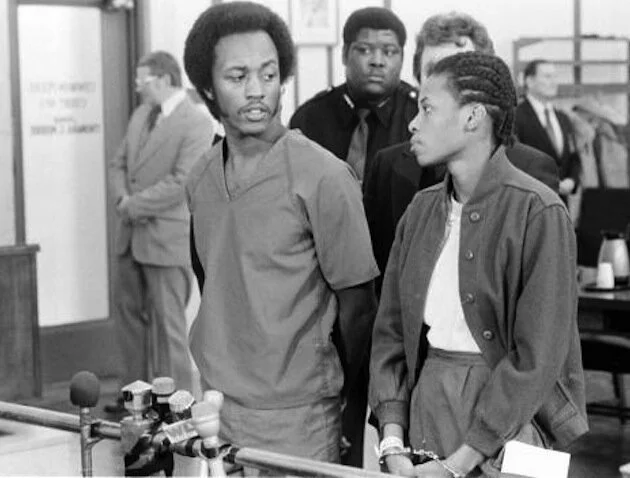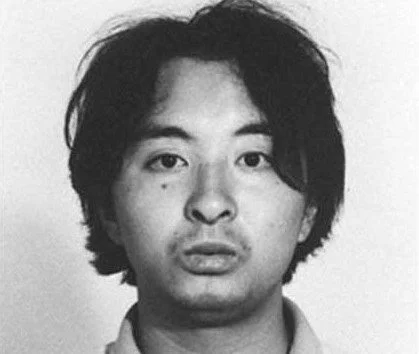Netflix's New True-Crime Documentary "Girl in the Picture" is a Pinnacle of Storytelling
This past Wednesday (July 6th), Netflix released a stellar new true-crime documentary titled Girl in the Picture, a twisting and gut-wrenching story well detailed by director Skye Borgman. This 102-minute-long feature details the traumatizing and hard life of one young woman that was cut too short, but despite her death, that is only the beginning of her story. This documentary works well to draw the viewer in from the very beginning, throwing them into the thick of the scene alongside detectives in a reenacted scene coming upon the death of the young woman before throwing in a curve ball that leaves you shocked and itching to understand more. Well organized and emotionally deep, if you can build the courage to stomach the painful events and memories described by the character witnesses, it is a definite must-watch for a true crime fan.
The story of this film was made famous through investigative journalist Matt Birkbeck’s award-winning book A Beautiful Child based on a picture (the very same referenced in the title) that called him to investigate. The story begins in 1990 when a man is rushing through a hospital with his wife on a stretcher. The man, named Clarence Hughes (40s), tells the doctors and his wife’s, Tonya (20), friends that she had been involved in a hit and run accident, and she was in rough shape. Five days later, Tonya died of her injuries in the hospital. Karen, Tonya’s best friend at the time, and other coworkers at the strip club mourned Tonya and the sweet life she was, and to try and help, they found Tonya’s mother in the phone book, calling her to deliver the news and give their condolences. The shocking news, however, came then when Tonya’s presumed mother stated that her daughter died as a young child and that she had no idea who this adult going by that name was.
This is only where the story begins. From her death comes the harrowing kidnapping of her son, Michael, from his elementary school at gunpoint by “Clarence,” his presumed father until children's services undergo a paternity test proving otherwise. Michael’s kidnapping and disappearance draw immense media attention to the story and events, captivating the country in the stories of Michael and Tonya’s deaths by the older, off-putting man who took him, and the FBI gets involved to reveal more secrets. They find that “Clarence” isn’t actually Clarence, but Franklin Floyd, a man who has been a fugitive for the past two decades and who has a list of different aliases as long as his criminal record. Second, more important, however, the news coverage of Tonya’s death draws the attention of a young woman from Georgia, one who claims to have been best friends with Tonya in high school, and who claims Tonya’s real identity is Sharon Marshall, the daughter of Floyd.
The rest of the story, the investigation into who this woman really was, following her from high school to working strip club to strip club, along with the search for her son, Michael, to play out cleanly, allowing for the viewer to easily understand the complicating details and events. As the story plays out you truly grow to understand the darkness that covered her life, the darkness and abuse perpetrated by Floyd that you can feel attacking your own emotions. The choice to also leave major reveals to the very last moment, particularly the reveal of her real name and identity, builds the strongest sense of suspense I have felt in a film-watching experience in a while, utilizing all tools and facets to get your heart literally racing as you get closer to the truth. As a Guardian review of the film put it: “More threads pulled on, more misery revealed, more murder, more aliases, more abuse, and by the end you are reeling at the scale of the monstrosity revealed.”
With a story like this, you would be almost expected over forgiven to get lost in all the information, dates, times, places, and people they throw at you. Throughout Tonya/Sharon’s story, she is forced to move around constantly, changing her name and location frequently. Additionally, the investigation into who she was and all that occurred to her, and her son spanned over two decades, bringing in numerous different investigative teams and witnesses. Despite the twisting story that would ask most sleuths to bring a notebook and pencil to it, Borgman works hard to break it down into manageable, easy-to-swallow portions to keep the audience from ever getting too off track. Chicago Sun-Times writer Richard Roeper describes the story as told her: “It’s arguably the most labyrinthian real-life crime story you’ll ever hear…but thanks to the skilled work by acclaimed director Skye Borgman, the precise editing that shifts from time period to time period not as a gimmick but with purpose, and new interviews shedding light on various aspects of the case, we keep up with the story.”
The real piece of this documentary story that makes it excel in the format it was provided is the strong emotional ties that persist throughout this woven-together piece, especially coming in through the witnesses and interviews sprinkled heavily throughout. Throughout the tale of the documentary, we meet numerous people connected to this case in one way or another. Socially, we meet people like Karen, her co-worker from 1989, Merle and Ernest Bean, Michael’s foster parents for four years after Tonya/Sharon’s death, Jennifer Fischer and other best friends of Sharon’s from their days at Forest Park Senior High, Heather, another old co-worker at a strip club in Florida, and many more who’s hearts break and trying to tell the story of the woman they knew.
Aside from these friends, you meet other investigators involved in the case, like retired FBI investigator Joe Fitzpatrick and assistant police chief Billy Carter, two men who speak about this case and missing Michael as secrets that keep them up at night, pain that keeps them from moving forward. Daily Beast writes about these interviews: “Their commentary hammers home the shock, awe and horror that defined this entire affair, as well as underscores the desire by so many to see justice done….”.
The use of these first-person interviews was also so well utilized in turning Tonya/Sharon, the first victim and question at the center of all of this, into her own, real character, a feat that many true crime stories and documentaries struggle to accomplish. Through speaking to her friends and coworkers, we learn about how smart Tonya was, how hard she worked in school, and was involved in different clubs in organizations. We learn about her love of science and dream to attend Georgia Tech and become an aerospace engineer. We learn later about how devoted of a mother she was to her son, Michael, and how she would have given him everything in the world if given the chance to. With these interviews and the countless pictures of her living life with others, on her own, away from Floyd and his influence, the gravity of this being a real person, someone abused and taken from the world far too quickly, becomes inescapable. Even the film pointedly ending, with a smiling picture of her followed up by a dedication of this film to her and Michael, leaves the viewer on the final note, forcing them to remember constantly who this tragedy is about first and foremost. Guardian’s Lucy Mangan once again notes this piece of directing:
“It felt, by the end, that every possible effort had been made to restore [redacted] – Tonya’s/Sharon’s real name – to us, and that the person who made it necessary was only there as a distasteful but inescapable part of her story. I have never seen a film less in thrall to a perpetrator, never seen a production succumb less to the lure of the evildoer. Perhaps it is a sign that we need more of these documentaries to be made by women, or perhaps just a sign that we need more of them made by Borgman.”
There is truly so much more to say about this documentary and the ways it achieves telling this horrifying story so well. From the interviews that are truly from a set of people that wanted to be a part of this production, in telling her story, to the real visuals and pictures scattered throughout to help you identify with her and even the strong, emotional honesty of the end, with friends and family sharing their rage and sadness together, the film strongly portrays the ripple effects that one life can have on a number of people despite a wall of truth and lies is in between. The film handles topics of kidnapping, sexual abuse, incest, domestic violence, and death, a warning for anyone with such triggers, but if you are able, I strongly suggest sitting down and watching this documentary, maybe even over a few days’ time, to see the story that plays out. Girl in the Picture is an incredibly strong showing, drawing you in and keeping you engaged and horrified until the end, finding somewhat of a version of peace in the quiet of questions answered and the comfort of honor being given.






